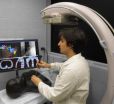(Press-News.org) Boston, MA—There is a growing recognition that in health care institutions where professionalism is not embraced and expectations of acceptable behaviors are not clear and enforced, an increase in medical errors and adverse events and a deterioration in safe working conditions can occur. In 2008 Brigham and Women's Hospital (BWH) created the Center for Professionalism and Peer Support (CPPS) and has seen tremendous success in this initiative. Researchers recently analyzed data from the CPPS from 2010 through 2013 and found that employees continue to turn to the center for help, receiving reports about concerns regarding 201 physician/scientist and 8 heath care teams. These findings are published last week in The Joint Commission Journal on Quality and Patient Safety.
"These findings suggest that we have made substantial progress in professionalism with the creation of our center and that its popularity continues to grow," explained Jo Shapiro, MD, FACS, director of the CPPS and lead author of this study. "Our analysis also shows that our processes for responding to professionalism concerns have been able to address, and most often alter, repetitive unprofessional behavior in a substantive and beneficial manner."
The researchers evaluated the development of the Center for Professionalism and Peer Support and the results of the programmatic initiative at BWH that were put in place to educate the hospital community regarding professionalism and well as the process for managing professionalism lapses. For this article the researchers analyzed all concerns reported to the CPPS from January 1, 2010 through June 30, 2013. During this time the CPPS received reports of 201 physician/scientists and 8 health care teams about whom concerns were raised. The concerns were categorized by behavior that was, uncollegial, shirking responsibilities, hypercritical, demeaning, angry and others. The researchers also found that the interventions used in each specific case were in most cases successful in creating substantive changes in behavior. Interventions included: feedback, professional behavior coaching, conflict resolution programs, mental health support for emotional stresses and others.
"Our intention in creating the CPPS was, above all, to create a supportive professional community, explained Shapiro. "Our findings indicate that not only are employees bringing concerns to the center, but the interventions used in each case are changing behavior in a substantive and beneficial manner," explained Shapiro.
Initiating and sustaining changes in professional relationships requires a significant and ongoing institutional commitment to cultural change. Researchers note that future work is needed to more carefully categorize different types of unprofessional behavior, track the most appropriate and effective behavior modification strategies and identify methods for conflict resolution and team training.
INFORMATION:
This research was supported by Brigham and Women's Hospital.
Brigham and Women's Hospital (BWH) is a 793-bed nonprofit teaching affiliate of Harvard Medical School and a founding member of Partners HealthCare. BWH has more than 3.5 million annual patient visits, is the largest birthing center in New England and employs nearly 15,000 people. The Brigham's medical preeminence dates back to 1832, and today that rich history in clinical care is coupled with its national leadership in patient care, quality improvement and patient safety initiatives, and its dedication to research, innovation, community engagement and educating and training the next generation of health care professionals. Through investigation and discovery conducted at its Biomedical Research Institute (BRI), BWH is an international leader in basic, clinical and translational research on human diseases, more than 1,000 physician-investigators and renowned biomedical scientists and faculty supported by nearly $650 million in funding. For the last 25 years, BWH ranked second in research funding from the National Institutes of Health (NIH) among independent hospitals. BWH continually pushes the boundaries of medicine, including building on its legacy in transplantation by performing a partial face transplant in 2009 and the nation's first full face transplant in 2011. BWH is also home to major landmark epidemiologic population studies, including the Nurses' and Physicians' Health Studies and the Women's Health Initiative. For more information and resources, please visit BWH's online newsroom.
Instituting a culture of professionalism
Researchers describe the benefits of establishing a Center for Professional and Peer Support at Brigham and Women's Hospital
2014-03-27
ELSE PRESS RELEASES FROM THIS DATE:
Controlling electron spins by light
2014-03-27
This news release is available in German.
The material class of topological insulators has been discovered a few years ago and displays amazing properties: In their inside, they behave electrically insulating but at their surface they form metallic, conducting states. The electron spin, i. e., their intrinsic angular momentum, is playing a decisive role. Their sense of rotation is directly coupled to their direction of movement. This coupling leads not only to a high stability of the metallic property but also enables a particularly lossless electrical conduction. ...
To grow or not to grow: a step forward in adult vertebrate tissue regeneration
2014-03-27
The reason why some animals can regenerate tissues after severe organ loss or amputation while others, such as humans, cannot renew some structures has always intrigued scientists. In a study now published in PLOS ONE*, a research group from Instituto Gulbenkian de Ciência (IGC, Portugal) led by Joaquín Rodríguez León provided new clues to solve this central question by investigating regeneration in an adult vertebrate model: the zebrafish. It was known that zebrafish is able to regenerate organs, and that electrical currents may play a role in this process, but the exact ...
Seasonal Arctic summer ice extent still hard to forecast, study says
2014-03-27
Scientists at the National Snow and Ice Data Centre (NSIDC), University College London, University of New Hampshire and University of Washington analysed 300 summer Arctic sea ice forecasts from 2008 to 2013 and found that forecasts are quite accurate when sea ice conditions are close to the downward trend that has been observed in Arctic sea ice for the last 30 years. However, forecasts are not so accurate when sea ice conditions are unusually higher or lower compared to this trend.
"We found that in years when the sea ice extent departed strongly from the trend, such ...
Four in 10 infants lack strong parental attachments
2014-03-27
PRINCETON, N.J.—In a study of 14,000 U.S. children, 40 percent lack strong emotional bonds — what psychologists call "secure attachment" — with their parents that are crucial to success later in life, according to a new report. The researchers found that these children are more likely to face educational and behavioral problems.
In a report published by Sutton Trust, a London-based institute that has published more than 140 research papers on education and social mobility, researchers from Princeton University, Columbia University, the London School of Economics and Political ...
GW researcher invents 'mini heart' to help return venous blood
2014-03-27
WASHINGTON (March 27, 2014) — George Washington University (GW) researcher Narine Sarvazyan, Ph.D., has invented a new organ to help return blood flow from veins lacking functional valves. A rhythmically contracting cuff made of cardiac muscle cells surrounds the vein acting as a 'mini heart' to aid blood flow through venous segments. The cuff can be made of a patient's own adult stem cells, eliminating the chance of implant rejection.
"We are suggesting, for the first time, to use stem cells to create, rather than just repair damaged organs," said Sarvazyan, professor ...
Clemson researcher touts surgical safety checklist to save lives
2014-03-27
Clemson University research assistant professor Ashley Kay Childers has been selected to participate in a forum to discuss quality improvement programs in U.S. hospitals that reduce preventable readmissions, prevent medical errors, improve patient outcomes and cut costs.
Childers, who also is a member of the South Carolina Hospital Association (SCHA) Quality and Patient Safety team, will participate in the American College of Surgeons (ACS) Surgical Health Care Quality Forum South Carolina in Columbia April 1.
The forum will focus on Childers' work with the Safe Surgery ...
Neurobiologists find chronic stress in early life causes anxiety, aggression in adulthood
2014-03-27
Cold Spring Harbor, NY -- In recent years, behavioral neuroscientists have debated the meaning and significance of a plethora of independently conducted experiments seeking to establish the impact of chronic, early-life stress upon behavior – both at the time that stress is experienced, and upon the same individuals later in life, during adulthood.
These experiments, typically conducted in rodents, have on the one hand clearly indicated a link between certain kinds of early stress and dysfunction in the neuroendocrine system, particularly in the so-called HPA axis (hypothalamic-pituitary-adrenal), ...
Cause for exaggerated insulin response in subset of bariatric surgery patients identified
2014-03-27
CINCINNATI—University of Cincinnati (UC) researchers have discovered that altered islet cell function and reduced insulin clearance contribute to excessive post-meal insulin response in patients experiencing low blood sugar symptoms (hypoglycemia) following gastric bypass surgery.
These findings, led by Marzieh Salehi, MD, associate professor in the UC division of endocrinology, metabolism and diabetes, are featured online this month in The Journal of Clinical Endocrinology & Metabolism, and are part of an ongoing effort by UC researchers to better understand the effect ...
NASA's Hubble Space Telescope spots Mars-bound comet sprout multiple jets
2014-03-27
NASA released Thursday an image of a comet that, on Oct. 19, will pass within 84,000 miles of Mars -- less than half the distance between Earth and our moon.
The image on the left, captured Mar. 11 by NASA's Hubble Space Telescope, shows comet C/2013 A1, also called Siding Spring, at a distance of 353 million miles from Earth. Hubble can't see Siding Spring's icy nucleus because of its diminutive size. The nucleus is surrounded by a glowing dust cloud, or COMA, that measures roughly 12,000 miles across.
The right image shows the comet after image processing techniques ...
New guidance system could improve minimally invasive surgery
2014-03-27
Johns Hopkins researchers have devised a computerized process that could make minimally invasive surgery more accurate and streamlined using equipment already common in the operating room.
In a report published recently in the journal Physics in Medicine and Biology, the researchers say initial testing of the algorithm shows that their image-based guidance system is potentially superior to conventional tracking systems that have been the mainstay of surgical navigation over the last decade.
"Imaging in the operating room opens new possibilities for patient safety and ...
LAST 30 PRESS RELEASES:
Revealing the diversity of olfactory receptors in hagfish and its implications for early vertebrate evolution
Development of an ultrasonic sensor capable of cuffless, non-invasive blood pressure measurement
Longer treatment with medications for opioid use disorder is associated with greater probability of survival
Strategy over morality can help conservation campaigns reduce ivory demand, research shows
Rising temperatures reshape microbial carbon cycling during animal carcass decomposition in water
Achieving ultra-low-power explosive jumps via locust bio-hybrid muscle actuators
Plant-derived phenolic acids revive the power of tetracycline against drug-resistant bacteria
Cooperation: A costly affair in bacterial social behaviour?
Viruses in wastewater: Silent drivers of pollution removal and antibiotic resistance
Sub-iethal water disinfection may accelerate the spread of antibiotic resistance
Three in four new Australian moms struggle with body image
Post-stroke injection protects the brain in preclinical study
Cardiovascular risk score predicts multiple eye diseases
Health: estimated one in ten British adults used or interested in GLP-1 medications for weight loss
Exercise to treat depression yields similar results to therapy
Whooping cough vaccination for pregnant women strengthens babies’ immune system
Dramatic decline in new cases of orphanhood in Uganda driven by HIV treatment and prevention programs
Stopping weight loss drugs linked to weight regain and reversal of heart health markers
Higher intake of food preservatives linked to increased cancer risk
Mass General Brigham–developed cholera vaccine completes phase 1 trial
First experimental validation of a “150-year-old chemical common sense” direct visualization of the molecular structural changes in the ultrafast anthracene [4+4] photocycloaddition reaction
Lack of support for people on weight loss drugs leaves them vulnerable to nutritional deficiencies, say experts
Dogs’ dinners can have greater climate impact than owners’
Are you ready to swap salmon for sprats and sardines?
1.6 million UK adults used weight loss drugs in past year
American College of Cardiology comments on new dietary guidelines for Americans
American Society of Gene & Cell Therapy and Orphan Therapeutics Accelerator partner to advance and commercialize promising rare disease treatments
One in 14 patients having day case surgery have new or worse chronic pain 3 months after their operation
New study highlights link between eviction rates and gun violence
Heatwaves heat up soil but not toxin levels in rice, study finds
[Press-News.org] Instituting a culture of professionalismResearchers describe the benefits of establishing a Center for Professional and Peer Support at Brigham and Women's Hospital




